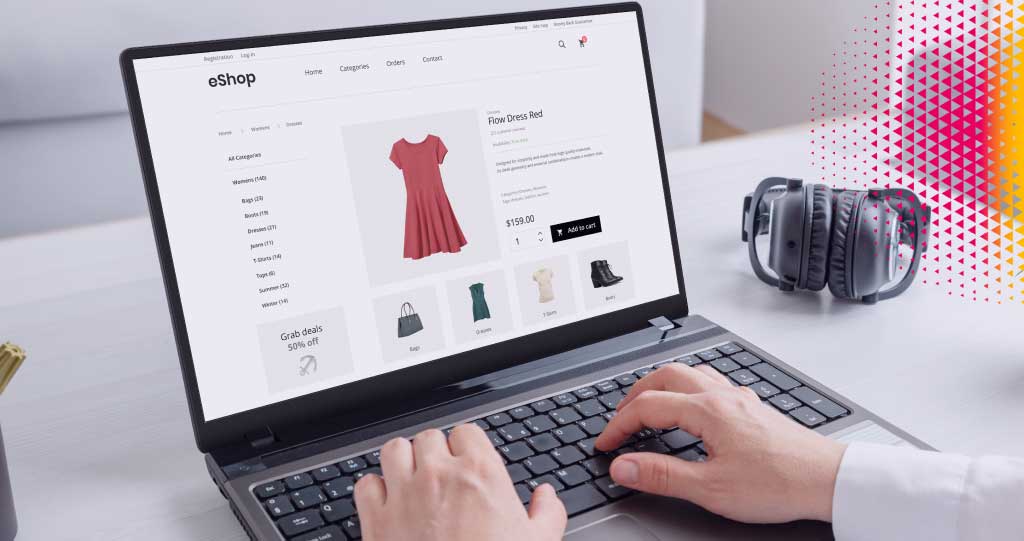Anticipating customer needs in retail with a unified customer view: methods, tools, and practical cases

As customer expectations continually evolve, companies must adapt swiftly to keep up. Yet, many retailers grapple with significant challenges like inconsistencies across their sales channels and ineffective data integration.
By consolidating all touchpoints on a single platform, retail data provides a unified view of the customer. Orisha Commerce assists in this transition by offering a comprehensive and high-performing tool.
Why anticipating customer needs is strategic in 2025
Today, 50% of French consumers use both online and offline channels for their daily shopping. Digitalization has fundamentally transformed buying behaviors, and consumers now navigate seamlessly between online sales sites, apps, marketplaces, and physical stores.
Moreover, 61% of consumers are willing to spend more with companies that offer personalized experiences. They crave personalization and recognition, seeking tailored recommendations and offers, or else they risk losing interest in the brand.
With the e-commerce boom, consumers have become increasingly impatient. They demand responsive customer service, immediate product availability, and faster delivery times.
Understanding customer needs
By utilizing unified data such as purchase histories, browsing patterns, and interactions companies can analyze customer behavior, revealing valuable insights into emerging trends and customer expectations.
This knowledge becomes even more powerful when paired with artificial intelligence (AI) tools. AI can detect consumption patterns, anticipate purchase intentions, and craft individualized customer journeys.
Specifically, this approach enables:
- Synchronized shopping carts between the website and mobile application;
- Personalized in-store greetings with assistance tailored to the customer’s profile;
- Real-time notifications to inform customers of product availability.
Personalized scenarios and solutions
These personalized scenarios can extend even further. For example, a customer who regularly purchases high-end products might be offered a VIP program, including dedicated customer service and exclusive event invitations. Specialized solutions such as Tweakwise are already harnessing AI to create seamless and personalized shopping experiences.
Key takeaway (McKinsey, 2024)
78% of consumers claim they are more loyal to companies that personalize their offers and communications. In retail, anticipating needs not only meets demand more effectively but also bolsters customer retention.
Unified customer view as a foundation
Unified commerce hinges on aggregating information from multiple touchpoints. This strategy allows companies to gain a holistic view of the customer journey and identify consumption trends. These insights are critical for anticipating demand and preventing stockouts by timely adjusting inventory to match customer needs.
In a fiercely competitive market, the customer experience is paramount. A company that delivers a frictionless customer journey will more likely stand out. Data analysis tools empower retailers to meet customer demands and exceed competitors’ capabilities.
Key takeaway (Capgemini, 2023)
60% of buyers view queues as the biggest barrier to a positive in-store experience. By anticipating customer flow and implementing solutions like mobile POS (mPOS) or self-checkout, retailers can decrease dissatisfaction and boost conversions.
Leveraging data and AI to predict demand
From data to prediction
Collected data is transformed into actionable insights through artificial intelligence, which analyzes vast volumes of data in real-time and identifies subtle patterns via predictive models.
Several tools are essential for companies:
- Customer Relationship Management (CRM) centralizes data and enables detailed management of customer relationships. AI leverages this data to provide personalized recommendations and anticipate individual needs.
- Sales analysis tools convert past transactions into statistical models. These predictive models help forecast potential stockouts and adjust assortments based on emerging trends.
- Data management platforms and web tracking solutions supply AI with continuous data streams from websites, campaigns, and social networks, allowing for more refined demand predictions and marketing adjustments.
- Customer feedback systems bolster predictive models with qualitative data, crucial for understanding shifting expectations. For instance, an online chat can collect user queries to optimize customer support.
Adjusting services in real-time
With unified data and AI, companies can make immediate decisions. Insights generated are integrated into business processes to adjust inventory, pricing, and services according to actual consumer demands.
- Sales forecasts inform automatic replenishment, reducing stockouts.
- AI identifies products at risk of poor sales and initiates targeted promotions rather than broad markdowns.
- High-value customers (with a high Customer Lifetime Value – CLV) can receive personalized services such as VIP offers, loyalty programs, and expedited logistics.
Optimizing markdowns and inventory management
Effective inventory management is crucial for anticipating customer needs and safeguarding margins. Poor anticipation can lead to stockouts, causing frustration and lost sales, or product surpluses requiring expensive markdowns.
Data reliability is the initial step for effective management.
Unified customer view for precise management
With a unified customer view, companies gain precise insights into purchasing behaviors and real-time demand, allowing for:
- Adjustments to assortments based on local or seasonal preferences;
- Optimal replenishments through accurate forecasts derived from historical data and emerging trends;
- Reduction of overstock by aligning demand planning with actual consumption habits.
The reliability of these forecasts can be measured by the anticipation rate.
To mitigate the financial impact of unsold items, dynamic stock allocation is essential. Rather than imposing broad reductions at the end of the season, companies use data and AI to target specific segments. An overstocked product can be offered with personalized discounts to interested customers or included in a tailored bundle.
The efficacy of this approach is measured by avoided markdowns.
Key takeaway (IHL Group, 2024)
58.9% of customers leave a store empty-handed due to stockouts. Anticipating needs through dynamic allocation and demand forecasts reduces these lost sales.
Customer cases: Decathlon, Intersport, Sport 2000
Decathlon, the French leader in sports equipment, has placed innovation at the forefront of its omnichannel strategy. The brand has extensively implemented RFID technology to ensure precise tracking of stocks and products. This real-time visibility facilitates more effective responses to customer needs.
Intersport has enhanced its appeal by better integrating its channels. Click & Collect and Ship-from-Store have become standard practices, reducing logistics costs. The brand maintains a unified vision across all its stores.
Sport 2000, with its network of independent stores, adopted unified commerce to harmonize its customer experience. Each store now has a comprehensive view of customer and product data, facilitating replenishment and ensuring consistent service, even within a cooperative model.
5 actions to anticipate needs in-store
- Promote transparency
Clearly display critical information such as product details, availability, return policies, and delivery times. This transparency alleviates frustration and builds a trustful commercial relationship. - Ensure accessible customer support
Providing customer service both in-store and online demonstrates the brand’s commitment. Customers should receive prompt answers to their queries via a sales associate with a tablet, online chat, or assistance center. - Highlight responsible commitments
Consumers desire tangible proof of sustainable practices. Highlight eco-responsible actions like traceability, recycling, and local initiatives to strengthen emotional connection and loyalty. - Personalize every interaction
Utilize unified data to offer personalized recommendations. A recognized customer in the store will see suggestions they viewed online, ensuring a seamless and consistent experience across all channels. - Adjust services in real-time
Customer needs evolve constantly. Monitor purchase habits and adapt your services accordingly: flexible delivery options (express, in-store pickup, collection points), timely promotions, and inventory adjustments based on demand.
How Orisha Commerce turns retail objectives into measurable results
| Objective |
Solution |
Associated KPI |
Orisha Technology |
|
Anticipate product demand |
Utilize unified customer view and predictive AI algorithms to align the offer with trends and local preferences |
Anticipation rate |
Unified retail data (Openbravo Commerce Cloud) |
|
Reduce markdown losses |
Adopt dynamic stock allocation to prevent overstock and optimize product clearance |
Avoided markdown | Orisha Dynamic Allocation |
|
Enhance customer retention |
Personalize customer experience both in-store and online through clienteling |
Repurchase rate, CLV |
Orisha Clienteling |
|
Enhance in-store experience |
Minimize checkout time with a mobile POS and streamline customer interaction via self-checkout |
Checkout abandonment rate, NPS |
Orisha mPOS, Self-checkout |
|
Optimize omnichannel logistics |
Centralize inventory with an Order Management System (OMS) for effective Ship-from-Store and Click & Collect services |
OTIF, return rate |
Orisha Centralized Stock Management |
Unified commerce is establishing itself as an indispensable strategy for streamlining the customer journey. By integrating all sales channels and centralizing data, retailers can anticipate their customers’ needs.
Orisha Commerce offers an innovative solution that supports companies in this transformation. Don’t let the competition get ahead: offer your customers an unmatched shopping experience.
FAQ
How to anticipate customer needs in retail in 2025?
In 2025, anticipating needs involves a unified customer view (consolidated POS, OMS, and CRM data), predictive models to estimate demand, and actionable strategies (clienteling, personalized offers). Monitoring is done through various KPIs, such as repurchase rate, CLV, stock accuracy, and OTIF.
What is a “unified customer view” and why is it crucial?
The unified customer view consolidates a customer’s interactions and purchases across all channels into a 360° profile. It allows for personalized journeys, prediction of intentions (segments, baskets), and reduced attrition. Without unified data, recommendations and forecasts face problems: they are partial and less effective.
Which KPIs to track for measuring demand anticipation?
Companies should track at least: stock accuracy, stockout rate, C&C rate, ship-from-store lead time, OTIF, repurchase rate, and CLV. Additionally, a forecast error indicator (MAE or MAPE) evaluates the accuracy of demand models.
How does AI improve need anticipation?
AI models analyze historical data, web-to-store signals, and contexts (weather, seasonality, promotions) to anticipate needs and demand at SKU/store level. The result: fewer stockouts, limited markdowns, better product availability, and more relevant marketing campaigns.
How does optimizing markdowns help companies anticipate needs?
A markdown management strategy driven by data (sales speeds, elasticity, stocks) allows intelligent clearance, margin protection, and reveals demand signals (e.g., underperforming vs. overperforming items), useful for refining forecasts and dynamic allocation.
Source
Personalization & loyalty – The State of Personalization 2024, McKinsey
Queues & checkout experience – What Matters to Today’s Consumer, Capgemini Research Institute (2023)
Stockouts & sales losses – Out-of-Stock and Inventory Distortion Report, IHL Group (2024)
Unified commerce & POS – Hype Cycle for Retail Technologies 2024, Gartner






